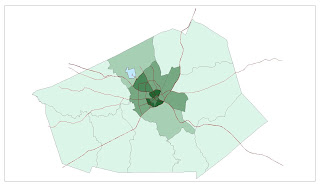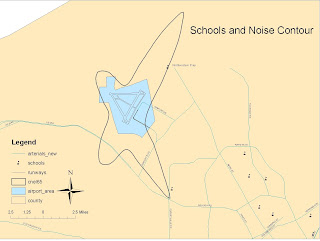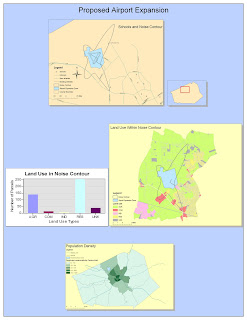 Exercise 4
Exercise 4
 Exercise 5
Exercise 5

The Arcmap tutorial was at first frustrating, considering the virtually limitless ways in which one can manipulate the data. By the time I got to the last exercise though, I was more comfortable with the controls and started seeing where to go to change what aspect of the presentation. Getting used to the program and familiarization through repetition I found is the best way through the assignment. Arcmap allowed for addition of information in the form of color, bar graphs, new roads, etc. to equip the user with every tool necessary to present the spatial information in the most effective way.
One thing I found confusing was the navigation of folders to save and retrieve additional information. Since the program is constantly referring to data located elsewhere, if that data isn’t organized it could be a data retrieval nightmare. I also found exporting specific maps from the poster as jpeg files to be difficult. Finding out that there is more than one way to (for example) access the properties window came from getting used to the program.
The potential of GIS is virtually infinite, as there are countless effective combinations of ways to present spatial information. Everything from roads to data tables to legends is fully customizable through the program. Everyone uses geographic information every day, so the importance and application of GIS are undeniable. Application of GIS can be for presentations in various occasions, such as school and work.
Information such as population, rainfall, roads, vegetation is all subject to change over time (whether it is a short or long time period). Since GIS is based on such dynamic information, extra attention must be placed on the dates and renewing versions. In that sense, it can be an endless time-consuming process. Another potential pitfall is that the complexity of programs such as Arcmap or the massive amounts of information presented in GIS might just be too much for the people who just want one simple piece of information.


No comments:
Post a Comment